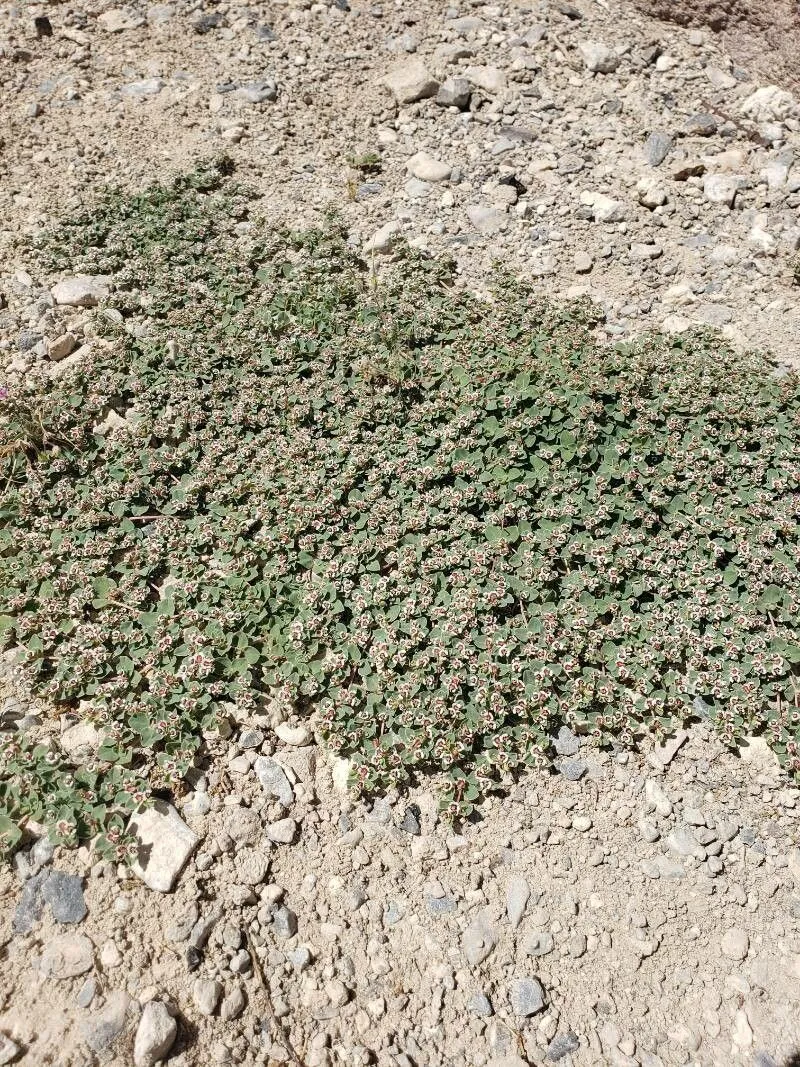
Author: Torr. & A.Gray
Bibliography: Pacif. Railr. Rep. Pope, Bot. 2(4): 174 (1857)
Year: 1857
Status: accepted
Rank: species
Genus: Euphorbia
Vegetable: False
Observations: California to Oklahoma and N. & W. Mexico
Rattlesnake weed, scientifically known as Euphorbia albomarginata, is a remarkable plant recognized for its distinctive characteristics and wide geographical distribution. Described by botanists Torr. & A.Gray in the mid-19th century, this plant has established itself across a range of environments from California to Oklahoma, as well as in Northern and Western regions of Mexico.
Belonging to the Euphorbiaceae family, Euphorbia albomarginata thrives in diverse habitats, often emerging in arid and semi-arid conditions. It can be identified by its unique growth pattern and appearance. Typically, rattlesnake weed is a low-lying, mat-forming perennial, providing a lush ground cover in the areas it populates. The plant is adorned with small, rounded leaves that exhibit a noticeable white margin, adding to its delicate beauty.
One of the most fascinating aspects of Euphorbia albomarginata is its potential medicinal and practical uses. Historically, it earned the common name “rattlesnake weed” due to a belief among Indigenous peoples and early settlers that it could be used to treat rattlesnake bites, although this use is not supported by modern medical science.
Euphorbia albomarginata’s small, inconspicuous flowers are another of its charming features. Despite their unassuming size, these blooms play a critical role in the plant’s reproduction and ecological relationships, serving as a food source for various pollinators.
Its ability to spread and cover ground can make Euphorbia albomarginata an effective plant for soil conservation and erosion control in its native regions. However, like many euphorbias, it contains a milky sap that can be irritating to the skin and toxic if ingested, necessitating caution in handling and application.
In summary, Euphorbia albomarginata, or rattlesnake weed, is a versatile and resilient species that adds ecological and aesthetic value to the landscapes it inhabits. With a rich history and a significant presence across several states and into Mexico, this plant exemplifies the fascinating interplay between natural beauty and practical utility in the plant kingdom.
Eng: rattlesnake weed, whitemargin sandmat, rattlesnake-weed, white-margin sandmat, white-margin sandwort
En: Rattlesnake weed, White-margin Broomspurge, Whitemargin sandmat, Whitemargin spurge, Rattlesnake-weed, White-margin sandmat, White-margin sandwort
Taken Apr 30, 2022 by Blake W (cc-by-sa)
Taken Apr 14, 2016 by EOL − lonnyholmes (cc-by-nc)
Taken Apr 8, 2016 by EOL − James Bailey (cc-by-nc)
Taken Jul 12, 2015 by EOL − Wynn Anderson (cc-by-nc-sa)
Taken May 14, 2006 by EOL − Steve Matson (cc-by-nc)
Taken May 22, 2022 by tyler munson (cc-by-sa)
Taken Apr 2, 2021 by Taylor LG (cc-by-sa)
Taken Apr 30, 2022 by Blake W (cc-by-sa)
Taken Jan 20, 2020 by Devon Koeller (cc-by-sa)
Taken Apr 27, 2014 by EOL − Richard Spellenberg (cc-by-nc-sa)
© copyright of the Board of Trustees of the Royal Botanic Gardens, Kew.
© copyright of the Board of Trustees of the Royal Botanic Gardens, Kew.
© copyright of the Board of Trustees of the Royal Botanic Gardens, Kew.
Taken Nov 6, 2020 by Josie-Colin (cc-by-sa)
Taken Apr 30, 2022 by Blake W (cc-by-sa)
Family: Myrtaceae Author: (F.Muell.) K.D.Hill & L.A.S.Johnson Bibliography: Telopea 6: 402 (1995) Year: 1995 Status:…
Family: Rubiaceae Author: Pierre ex A.Froehner Bibliography: Notizbl. Bot. Gart. Berlin-Dahlem 1: 237 (1897) Year:…
Family: Sapindaceae Author: Koidz. Bibliography: J. Coll. Sci. Imp. Univ. Tokyo 32(1): 38 (1911) Year:…
Family: Asteraceae Author: A.Gray Bibliography: Pacif. Railr. Rep.: 107 (1857) Year: 1857 Status: accepted Rank:…
Family: Fabaceae Author: Medik. Bibliography: Vorles. Churpfälz. Phys.-Ökon. Ges. 2: 398 (1787) Year: 1787 Status:…
Family: Aspleniaceae Author: (Cav.) Alston Bibliography: Bull. Misc. Inform. Kew 1932: 309 (1932) Year: 1932…